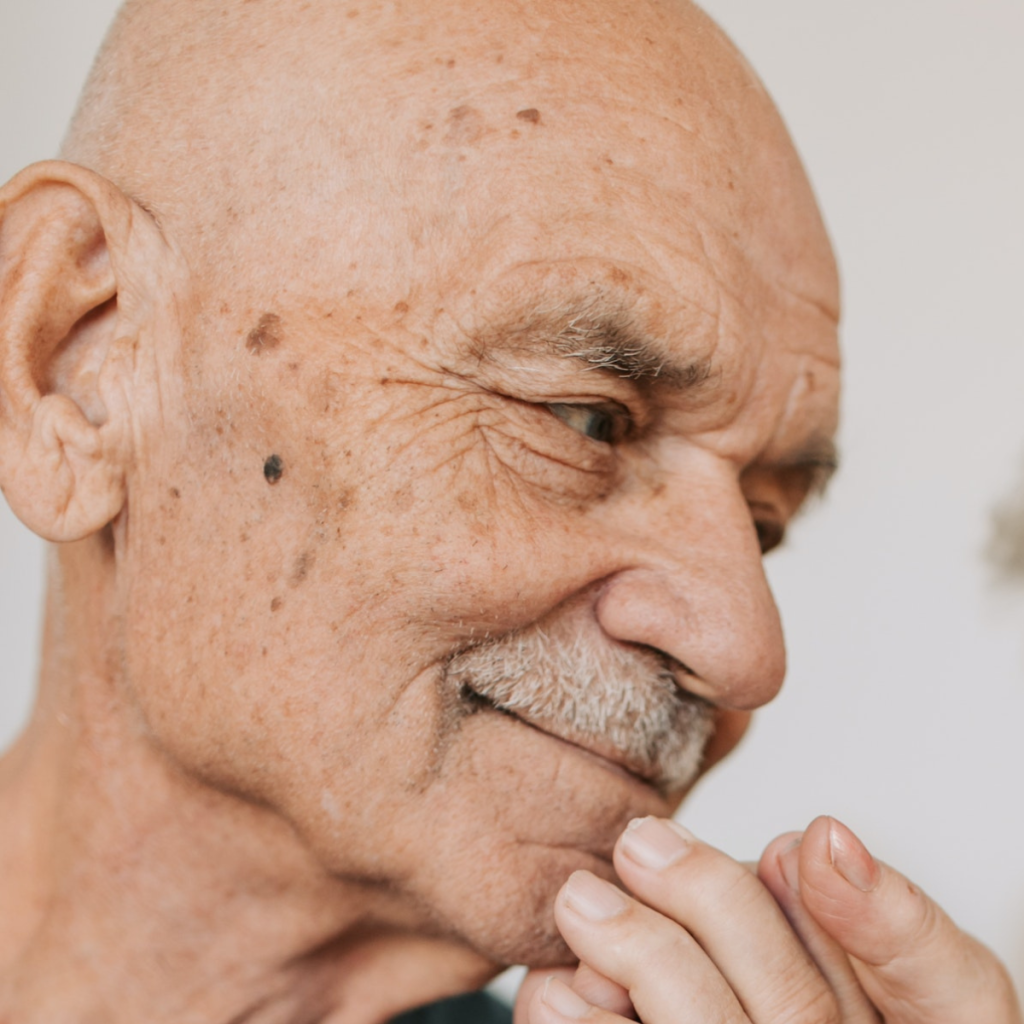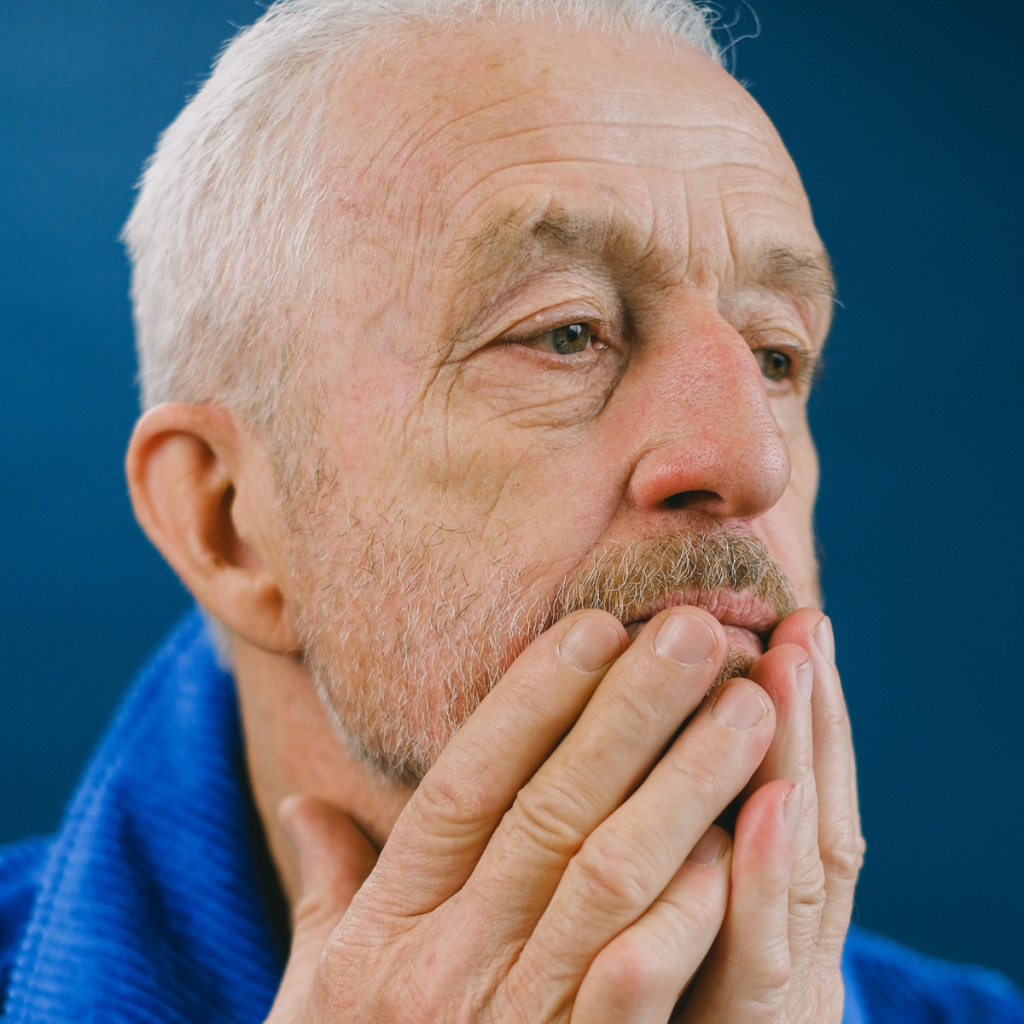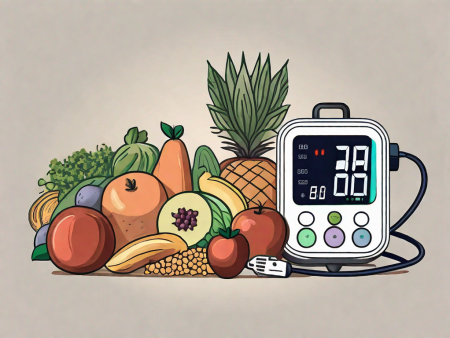Discover the underlying causes of age spots in men and gain insights into the factors that contribute to their development.
Exploring the Causes of Age Spots in Men
Age spots are a common concern for many men as they age. These pesky little spots can appear on the face, hands, arms, and other parts of the body, causing frustration and a longing for youthful, spot-free skin. But fear not! In this article, we will dive deep into the causes of age spots in men, helping you understand what they are and why they appear. So, grab a cup of coffee and let’s explore the fascinating world of age spots together!
Understanding Age Spots
Before we delve into the causes of age spots, let’s first get a clear understanding of what they actually are. Age spots, also known as liver spots or solar lentigines, are small, dark patches of skin that usually appear as a person gets older. Despite their name, age spots are not exclusive to the elderly, and men of all ages can be affected.

What are Age Spots?
Age spots are the result of an excess production of melanin, the pigment that gives color to our skin. When melanin production goes haywire, it can lead to the formation of these pigmented patches. Generally, age spots are harmless and don’t require medical treatment, but their appearance can be bothersome to many.
The Science Behind Age Spots
So, what causes this excess melanin production? Well, it’s a combination of factors, my friend! The primary culprit is sun exposure, which we’ll talk about in more detail later. But in addition to that, aging and genetics also play a significant role in the development of age spots.
Let’s dive deeper into the science behind age spots. As we age, our skin undergoes various changes. One of these changes is the accumulation of years of sun exposure. Over time, the sun’s harmful ultraviolet (UV) rays can damage our skin cells, including the melanocytes responsible for producing melanin. This damage can disrupt the normal melanin production process, leading to an overproduction of melanin in certain areas, resulting in age spots.
But why does sun exposure specifically trigger this excess melanin production? Well, when our skin is exposed to UV rays, it triggers a defense mechanism. The melanocytes produce more melanin as a way to protect the skin from further damage. However, this increased melanin production can sometimes become uneven, leading to the formation of age spots.
In addition to sun exposure, the natural aging process also contributes to the development of age spots. As we age, our skin undergoes changes in structure and function. The production of collagen and elastin, proteins responsible for maintaining the skin’s elasticity and firmness, decreases. This can result in thinning of the skin and a reduction in its ability to repair itself. As a result, the skin becomes more susceptible to damage from UV rays, making age spots more likely to appear.
Genetics also play a role in the development of age spots. Some individuals may be genetically predisposed to have a higher concentration of melanocytes or a higher sensitivity to UV rays. These genetic factors can make certain individuals more prone to developing age spots, even with minimal sun exposure.
It’s important to note that age spots are generally harmless and don’t require medical treatment. However, if you notice any changes in the appearance of your age spots, such as irregular borders, rapid growth, or bleeding, it’s essential to consult a dermatologist. They can evaluate the spots and determine if further investigation or treatment is necessary.
In conclusion, age spots are small, dark patches of skin that result from an excess production of melanin. Sun exposure, aging, and genetics all contribute to the development of age spots. Understanding the science behind age spots can help us take better care of our skin and make informed decisions about sun protection and skincare.
The Role of Aging in Developing Age Spots
Aging, my dear reader, is an inevitable part of life. As we get older, our skin undergoes various changes, and unfortunately, age spots can be one of them. Let’s take a closer look at how aging affects the skin and its connection to those pesky spots.

How Aging Affects the Skin
As we age, our skin becomes thinner and less able to repair itself. This thinning of the skin makes it more susceptible to damage and discoloration, leading to the formation of age spots. The decrease in collagen and elastin production also contributes to the thinning of the skin, making it more fragile and prone to developing these spots.
Furthermore, the natural oil production in our skin decreases as we age, resulting in drier skin. This dryness can exacerbate the appearance of age spots, as well as other signs of aging such as fine lines and wrinkles. Additionally, the production of melanin becomes less regulated as we get older, making it easier for those spots to appear.
Moreover, the cumulative effects of environmental factors such as pollution and exposure to harsh chemicals can accelerate the aging process. These external stressors can damage the skin’s DNA, leading to the formation of age spots and other skin imperfections.
The Connection Between Aging and Age Spots
While age spots can affect both men and women, studies have shown that men tend to develop them more frequently. This could be due to a combination of factors, including increased sun exposure (more on that later), hormonal changes, and genetic predispositions.
It is important to note that age spots are not solely caused by aging itself. Sun exposure plays a significant role in their development. Over time, the ultraviolet (UV) rays from the sun can damage the skin cells and trigger the production of excess melanin, resulting in the formation of age spots. This is why age spots are commonly found on areas of the body that are frequently exposed to the sun, such as the face, hands, shoulders, and arms.
Furthermore, lifestyle choices such as smoking and poor diet can also contribute to the development of age spots. Smoking, for instance, releases harmful chemicals into the body that can accelerate the aging process and increase the risk of age spots. Similarly, a diet lacking in essential nutrients and antioxidants can impair the skin’s ability to repair itself and maintain a healthy appearance.
In conclusion, while aging is a natural process that affects our skin in various ways, age spots are not an inevitable consequence. By taking proper care of our skin, protecting it from sun damage, and adopting a healthy lifestyle, we can minimize the appearance of age spots and maintain a youthful complexion for longer.
The Impact of Sun Exposure on Age Spots
Now, let’s shed some light on the powerful role that the sun plays in the development of age spots. We all love the warmth and radiance of the sun, but it can also wreak havoc on our skin if we don’t protect ourselves properly.
When it comes to sun exposure, it’s important to understand the relationship between the sun and our skin. The sun emits ultraviolet (UV) rays, which can penetrate the outer layers of our skin and cause damage at a cellular level. These rays can break down collagen and elastin, two proteins responsible for keeping our skin firm and youthful.
But how exactly does sun exposure lead to the formation of age spots? Well, it all starts with melanin. Melanin is the pigment responsible for giving our skin its color. When our skin is exposed to the sun’s harmful UV rays, it triggers an increase in melanin production as a defense mechanism. This increase in melanin is what gives us a tan, but it can also lead to the formation of age spots.
Over time, the excess melanin produced by our skin can accumulate in certain areas, resulting in the formation of those dreaded spots. Age spots, also known as liver spots or solar lentigines, typically appear on areas of the skin that are frequently exposed to the sun, such as the face, hands, shoulders, and arms.
Sun Exposure and Skin Damage
It’s important to note that the damage caused by sun exposure is not limited to the formation of age spots. Prolonged and unprotected exposure to the sun can also lead to other skin concerns, such as wrinkles, fine lines, and even skin cancer.
When our skin is exposed to UV rays, it triggers a series of reactions that can have long-lasting effects. The collagen and elastin fibers in our skin can become damaged, leading to a loss of elasticity and firmness. This can result in the formation of wrinkles and fine lines, making us appear older than we actually are.
Furthermore, UV rays can also damage the DNA in our skin cells, increasing the risk of skin cancer. Skin cancer is the most common type of cancer worldwide, and it’s largely preventable by taking proper sun protection measures.
Preventing Age Spots Through Sun Protection
But fear not, my fellow sun worshippers! There are steps you can take to protect your skin and reduce the risk of age spots. Sun protection is key when it comes to maintaining healthy and youthful-looking skin.
First and foremost, always apply a broad-spectrum sunscreen with an SPF of 30 or higher. This will help protect your skin from both UVA and UVB rays. Be sure to apply sunscreen generously and reapply every two hours, especially if you’re spending an extended period of time outdoors.
In addition to sunscreen, consider wearing protective clothing when you’re out in the sun. Opt for long-sleeved shirts, wide-brimmed hats, and sunglasses with UV protection. These items can provide an extra layer of defense against the sun’s harmful rays.
Lastly, seek shade during peak sun hours, typically between 10 a.m. and 4 p.m. This is when the sun’s rays are the strongest and most damaging. By limiting your sun exposure during these hours, you can significantly reduce the risk of age spots and other sun-related skin concerns.
Remember, prevention is key when it comes to age spots. By taking proactive measures to protect your skin from the sun, you can maintain a youthful and radiant complexion for years to come. So, embrace the sun responsibly and keep those age spots at bay!
Genetic Factors in Age Spots
While the sun may be the biggest contributor to age spots, our genetics also have a say in the matter. It turns out that the color of our skin, determined by our genes, can influence our susceptibility to age spots.
The Genetics of Skin Pigmentation
Humans come in a beautiful spectrum of skin colors, from pale to dark and everything in between. Our skin color is determined by the amount of melanin produced by our cells. People with fair skin tend to have less melanin, while those with darker skin produce more. This genetic difference can influence the appearance of age spots.
Inherited Risks for Age Spots
If your parents or grandparents have struggled with age spots, there is a higher likelihood of you developing them as well. Certain genetic variations can make our skin more susceptible to sun damage and, consequently, age spots. So, the next time you curse your ancestors for passing down your stubborn streak, remember they also had a hand in your freckles and age spots!
Lifestyle Factors Contributing to Age Spots
As much as we might like to blame genetics and the sun for everything, our lifestyle choices also play a part in the formation of age spots. Let’s take a closer look at how diet and smoking habits can impact the appearance of those skin blemishes.
The Effect of Diet on Skin Health
You are what you eat, or so they say. And when it comes to age spots, there may be some truth to that saying. A poor diet lacking in essential nutrients can contribute to skin damage and increase the risk of age spot formation. So, nourishing your body with a balanced diet rich in fruits, vegetables, and antioxidants can help keep those spots at bay.
Smoking and Age Spots
Ah, smoking – the not-so-friendly habit that can wreak havoc on our health in more ways than one. Not only does smoking increase the risk of various diseases, but it can also accelerate skin aging and lead to the formation of age spots. The toxic chemicals in cigarettes damage the collagen and elastin fibers in our skin, making those spots more likely to appear.
In conclusion, age spots are a common annoyance for many men. They are the result of various factors, including aging, sun exposure, genetics, and lifestyle choices. While we can’t turn back the clock or change our genes, we can take steps to protect our skin from the sun, nourish our bodies with a healthy diet, and kick that smoking habit to the curb. So, embrace the wisdom that comes with age, wear your sunscreen proudly, and let your inner glow shine through, regardless of those pesky age spots!







I don’t think the title of your article matches the content lol. Just kidding, mainly because I had some doubts after reading the article.
Thank you for your sharing. I am worried that I lack creative ideas. It is your article that makes me full of hope. Thank you. But, I have a question, can you help me?
Your point of view caught my eye and was very interesting. Thanks. I have a question for you.